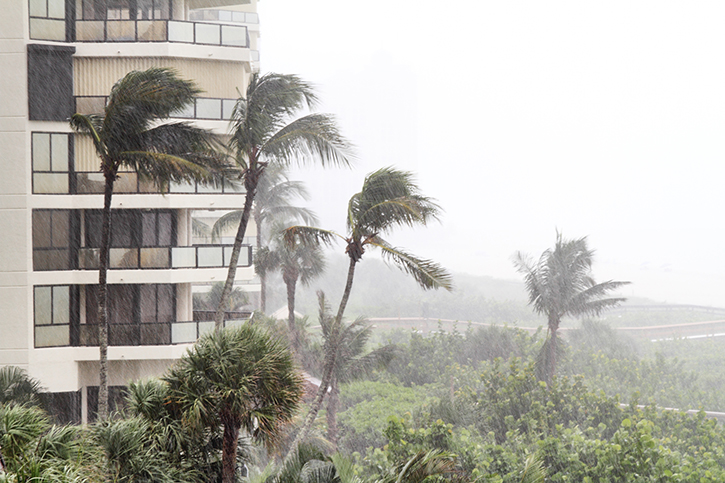Condo Association Insurance: An RCBAP Cheat Sheet

Selling insurance can be complicated. You have lots of numbers to crunch, boxes to check, and perhaps most challenging, you communicate complex policy information to clients. Now, when you’re selling Condominium Association Insurance, you can multiply that challenge x 100. As an insurance agent working with a Condo Association, you have many more people to educate, and much more information to convey. To further complicate the matter, many new condo owners are unaware of the type of coverages they may need. To make things a little easier, we’ve created a quick and easy RCBAP Cheat Sheet. Feel free to share it with clients or review it yourself if you want a quick overview on how to discuss this specialized coverage with clients.
Residential Condominium Building Association Policy: What is it & Who Should Purchase It?
The National Flood Insurance Program (NFIP) was
founded in 1968 with two stated goals “. . . reducing future flood damage and protecting property owners”. In 1973 the NFIP, which is administered by the Federal Emergency Management Agency (FEMA), expanded following passage of the requiring the purchase of flood insurance for certain homeowners in high-risk areas.
The Residential Condominium Building Association Policy (
RCBAP) available from the NFIP is a policy for shared areas of condominiums. The NFIP writes that there are three key facts to understand about their RCBAP coverage:
- The program is a single-peril policy and it “…only pays for direct physical loss by or from flood damage as defined by the policy”.
- The policy, subject to policy limitations and coverage exclusions, pays for “…direct physical damage to the insured structure based on Replacement Cost Value”
- “Personal Property coverage, also known as contents coverage, is not included with the residential condominium building property coverage.”
NFIP’s RCBAP: What’s Covered?
The NFIP RCBAP covers “[d]irect physical damage to your building, by or from a flood . . .” Some losses which are covered include:
- The foundation and building of the insured
- The electric power system
- Central air conditioners, heating, and water equipment
- Permanent carpeting over unfinished flooring
- Permanent wall paneling, bookshelves, and cabinetry
- Foundational walls, anchoring systems, and stairs attached to the insured building
- Fuel tanks, including any fuel in them, solar equipment, water pumps and well tanks
- Sump pumps, water heaters, heating pumps, and furnaces
NFIP’s RCBAP: What’s excluded?
The NFIP RCBAP flood insurance excludes several losses including:
- Mold, mildew, or moisture damage that the property owner, or Association, could have avoided.
- Living expenses like temporary housing
- Most vehicles like cars, and car parts
- Any property/ belongings outside of the insured building
- Financial loss due to interruption of business or inability to use the insured building
- Damage caused by the flow of water under the earth’s surface, like seepage, sewer or drain backup
- Coverage for the cost of following laws or ordinances which regulate or require demolition, remodeling, building or repairing of a property, including removing resulting debris
RCBAP Coinsurance Penalty: What is it and how can policyholders avoid it?
In simplest terms, an RCBAP Coinsurance Penalty refers to the amount of money that an insured must pay for a loss because they were underinsured.
RCBAP is the
only NFIP program that has a coinsurance clause. A building must be insured for 80% of its Replacement Cost Value (RCV) or the maximum amount available from the NFIP. If it is insured for less than the requirement, policyholders face coinsurance penalties.
In order to avoid coinsurance penalties, clients simply need to have enough coverage. For more information on RCBAP coinsurance policies, you or your client can refer to
this helpful NFIP video.
What are FEMA’s RCBAP coverage limits?
The
maximum coverage limit for residential condos is calculated by taking the total number of units in the condominium building times $250,000.
Private Insurance RCBAP: Could it be a Good Option?
The NFIP is an important program that has provided coverage for millions of Americans, but is it the best option for your clients?
More and more Condo Associations are turning to Private Insurance RCBAPs in recent years because of their higher coverage limits and flexibility.
Insurmark’s RCBAP offers:
- Coverage for residential condominium buildings in higher risk areas and A and V zones
- Up to $5,000,000 primary flood coverage on building and association personal property
- Minimum three stories with flow through garage or flow through first floor
- Total Insurable Value (TIV) up to $50,000,000
- $10,000 minimum deductible per building
- Access to experienced in-house underwriters who have the authority to rate, quote and bind
- NFIP Coverage Guarantee Endorsement
- Coverage written by carriers rated A.M. Best “A”
- For clients who need more than $5,000,000 in primary coverage - Insurmark can offer an excess flood policy specifically tailored to work with their RCBAP
This information is provided for general informational purposes only and is not intended to provide individualized business, insurance or legal advice. This information is not a replacement for any NFIP publications. All descriptions, summaries or highlights of coverage are for general informational purposes only and do not amend, alter or modify the actual terms or conditions of any insurance policy. Coverage is governed only by the terms and conditions of the relevant policy.